Recipes
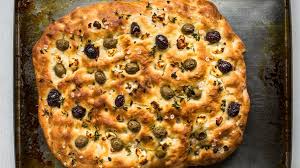
Focassia
Soften the yeast in a little of the water. Fresh yeast: Mix with about 2 times its weight in water, or more. Ideal water temperature: 38°C. Active dry yeast: Mix with about 4 times its weight in water. Ideal water temperature: 40°C. Combine the remaining ingredients, including the rest of the water, in the mixing bowl. Add the dissolved yeast, taking care not to let it come in contact with the salt. Mix to a smooth, developed dough. bake at 220℃ for 20mn
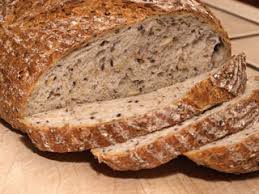
Five Grain Bread
mixing: Place all the ingredients in the mixing bowl, including the soaker. In a spiral mixer, mix on first speed for 3 minutes in order to incorporate the ingredients thoroughly. The dough should have a medium consistency. Turn the mixer to second speed and mix for 3 to 31⁄2 minutes, until the gluten net- work has been fairly well developed. Desired dough temperature: 76°F. Bulk fermentation 2 hours (or overnight retarding). folding: Fold the dough once, after 1 hour. dividing and shaping: Divide the dough into 450-900gr pieces (or make rolls with smaller pieces). Preshape lightly into rounds and place on a lightly floured work surface, seams up. Cover the rounds with plastic. When the dough has relaxed sufficiently, shape it into tight round or oval loaves. Place the loaves in floured bannetons and cover with baker’s linen and plastic. final fermentation: 1 to 1 1⁄2 hours at about 24℃. Baking: With normal steam, 250℃ Although there are no raisins or other sweeteners in the bread, the eggs and oil contribute color, so the oven may need to be lowered by 220℃ partway through the bake. Loaves scaled at 900gr will take ap- proximately 40 minutes to bake, with round loaves taking slightly longer than oblong ones.
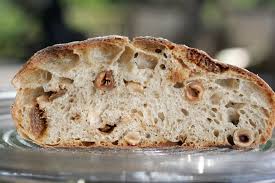
Fig Hazelnut Bread
Combine all the flours and the water and mix just until combined. Let stand 30 minutes (autolyse). Add the starter and salt. Mix at low speed 5–8 minutes to develop the dough. Remove the dough from the mixer to a worktable. Add the figs and nuts and knead in by hand until evenly distributed in the dough. Fermentation Ferment at 24°C until almost double in bulk, about 8 hours. Makeup and Proofing Scale at 750 gr. Make up into bâtard loaves Proof until almost double in bulk, about 3–4 hours. Baking 218°C with steam, 40–45 minutes
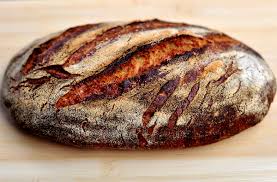
Durum Bread
mixing: Add all the ingredients, including the sourdough to the mixing bowl. In a spiral mixer, mix on first speed for 3 minutes in order to incorporate the ingredients. Correct the dough consistency as necessary. Turn the mixer to second speed and mix for another 21⁄2 to 3 minutes. The dough should be of medium consistency, but with perceptible dough strength and gluten development. Desired dough temperature: 24℃ Bulk fermentation: 1 1⁄2 hours. folding: Fold the dough after 45 minutes of bulk fermentation. dividing and shaping: Divide the dough into 450-900gr pieces (or make rolls with smaller pieces). Preshape lightly into rounds and place on a lightly floured work surface, seams up. Cover the rounds with plastic. When the dough has relaxed sufficiently (10 to 20 minutes), shape it into tight round or oval loaves. For a variation, the top of the loaves can be pressed into a damp cloth and then into a tray of raw sesame seeds. Place the loaves into floured bannetons or on lightly floured baker’s linen and cover with plastic. final fermentation: Approximately 1 to 11⁄4 hours at 24℃. Baking: Invert the risen loaves onto the loading conveyor or peel. Score the loaves as desired. Presteam the oven, load the bread, and steam again. Bake at 460°F. Open the oven vents after the loaves show color, in order to finish the bake in a drying oven. Loaves scaled at 900gr will bake in 35 to 40 minutes.

Danish Dough
croissant dough method Modified straight paste method Develop dough 3-4 minutes at second speed. Rest in the retarder 30 minutes . fold with the butter. Give 2 double turns

Croissant eclair
Combine 150 g of strong white flour with the yeast and 200 g of milk. Add 250 g of plain flour. Leave to ferment until the flour starts to appear cracked (approximately 15 minutes). Add 600 g of plain flour, salt, sugar, 350 g cold milk and 100 g of butter. Knead at speed 1 for 3 minutes, then at speed 2 for 6 minutes. Shape into a ball and leave to rise in a proofing cabinet at 20 - 23°C for one hour. Knock down the dough and chill. Give one double turn followed by a single turn. Rest the dough then roll out to a thickness of 2.5 mm. cut strip of 11cm x 2,5cm and place on eclair silpain Brush twice with beaten egg yolk. Bake in the oven at 175°C for 17 minutes.

Croissant Lenôtre
Making the croissant dough We usually do this part in the evening. Combine the dough ingredients and knead for 3 minutes, at low to medium speed, until the dough comes together and you’ve reached the stage of low to moderate gluten development. You do not want too much gluten development because you will struggle with the dough fighting back during laminating. Shape the dough like a disc, not a ball, before you refrigerate it, so it will be easier to roll it into a square shape the following day. Place the disc on a plate, cover with clingfilm and leave in the fridge overnight. Laminating the dough Cut the cold butter (directly from the fridge) lengthwise into 1,25 cm thick slabs. Arrange the pieces of butter on waxed paper to form a square of about 15 cm x 15 cm. Cover the butter with another layer of waxed paper and with a rolling pin pound butter until it’s about 19 cm x 19 cm. Trim / straighten the edges of the butter and put the trimmings on top of the square. Now pound lightly until you have a final square of 17 cm x 17 cm. Wrap in paper and refrigerate the butter slab until needed. make the dough out of the fridge. With a rolling pin roll out the dough disc into a 26 cm x 26 cm square. Try to get the square as perfect as possible and with an even thickness. Get the slab of butter from the fridge. Place the dough square so one of the sides of the square is facing you and place the butter slab on it with a 45 degree angle to the dough so a point of the butter square is facing you. Fold a flap of dough over the butter, so the point of the dough reaches the center of the butter. Do the same with the three other flaps. The edges of the dough flaps should slightly overlap to fully enclose the butter. With the palm of your hand lightly press the edges to seal the seams. Now the dough with the sealed in butter needs to be rolled out. With a lightly floured rolling pin start rolling out, on a lightly flour dusted surface, the dough to a rectangle of 20 x 60 cm. Start rolling from the center of the dough towards the edges, and not from one side of the dough all the way to the other side. This technique helps you to keep the dough at an even thickness. You can also rotate your dough 180 degrees to keep it more even, because you tend to use more pressure when rolling away from you than towards yourself. You can use these techniques during all the rolling steps of this recipe. Aim at lengthening the dough instead of making it wider and try to keep all edges as straight as possible. Fold the dough letter style, cover with clingfilm and refrigerate for 30 minutes (fold one third of the dough on top of itself and then fold the other side over it). Repeat the rolling and folding two more times (ending up with 27 layers of butter in total), each time rolling until the dough is about 20 cm x 60 cm. After each fold you should turn the dough 90 degrees before rolling again. The open ‘end’ of the dough should be towards you every time when rolling out the dough.at around 3:40 minutes). After the second turn, again give it a 30 minute rest in the fridge. After the third turn you leave the dough in the fridge overnight until day 3, the actual croissant making day! Dividing the dough Take the dough from the fridge. Lightly flour your work surface. Now very gently roll the dough into a long and narrow strip of 20 cm x 110 cm. If the dough starts to resist too much or shrink back during this process you can fold it in thirds and give it a rest in the fridge for 10 to 20 minutes before continuing. Do not fight the dough, when the dough refuses to get any longer, rest it in the fridge! It is such a shame to ruin two days of work. When your dough has reached its intended shape, carefully lift it a few centimeters to allow it to naturally shrink back from both sides. This way it will not shrink when you cut it. Your strip of dough should be long enough to allow you to trim the ends to make them straight and still be left with a length of about 100 cm. Shaping the croissants For the next stage you will need a tape measure and a pizza wheel. Lay a tape measure along the top of the dough. With the wheel you mark the top of the dough at 12,5 cm intervals along the length (7 marks total). Now lay the tape measure along the bottom of the dough and make a mark at 6,25 cm. Then continue to make marks at 12,5 cm intervals from this point (8 marks total). So the bottom and the top marks do not align with each other and form the basis for your triangles. Now make diagonal cuts starting from the top corner cutting down to the first bottom mark. Make diagonal cuts along the entire length of the dough. Then change the angle and make cuts from the other top corner to the bottom mark to create triangles. Again repeat this along the length of the dough. This way you will end up with 15 triangles and a few end pieces of dough Using your pizza wheel, make 1.5 cm long notches in the center of the short side of each dough triangle. Now very gently elongate each triangle to about 25 cm. This is often done by hand, but we have found that elongating with a rolling pin, very carefully, almost without putting pressure on the dough triangle, works better for us. You can try both methods and see what you think gives the best result. After you cut a notch in the middle of the short end of the triangle, try and roll the two wings by moving your hands outwards from the center, creating the desired shape with a thinner, longer point. Also try and roll the dough very tightly at the beginning and put enough pressure on the dough to make the layers stick together Proofing and baking Arrange the shaped croissants on baking sheets, making sure to keep enough space between them so they will not touch when proofing and baking. Combine the egg with a teaspoon of water and whisk until smooth. Give the croissants their first thin coating of egg wash. Proof the croissants draft-free at an ideal temperature of 24ºC to 26.5ºC (above that temperature there is a big chance butter will leak out!). use stone oven as a croissant proofing cabinet by preheating it for a minute to 25ºC It retains this temperature for a long time because of the oven stones and isolation. The proofing should take about 2 hours. You should be able to tell if they are ready by carefully shaking the baking sheet and see if the croissants slightly wiggle. You should also be able to see the layers of dough when looking at your croissants from the side.

Croissant INBP
in a dough mixer, mix all the ingredients and knead until you get a fairly soft, non-sticky dough. Put into a ball, film the salad bowl and let stand at room temperature for 15h. Realization of the crescent In a bowl, combine the flours, salt and sugar. Dig a well: put the crumbled yeast, the cold milk and the fermented dough in pieces. Mix by mixing for 5 minutes and then kneading for ten minutes until the dough, hard and firm at the beginning of the kneading becomes more supple and homogeneous. Divide into 2 pieces of the same weight (for ease). Reserve 1 fresh pate. Roll down the dough on a silicone mat or a sheet of parchment paper. to form a square of 25x25cm. Put in the freezer 15min. Meanwhile, take the butter out of the refrigerator, place it between 2 sheets of parchment paper and lower it in a square 1cm thick by hammering regularly with the rolling pin. Reserve cool. Tourage Remove the tempera from the freezer and the butter from the refrigerator. On a lightly floured work surface, place the square of tempera and place the square of butter on top in the diamond position. Close the tempera on top to embed it completely and return to closure against the work plan. Roll out the rolling pin as regularly as possible and form a rectangle of 45x15cm (best to spread regularly: put the roll in the center of the dough, spread from the center upwards then from the center downwards). Bring each end to the center of the rectangle, leaving a space of 1cm and fold (double turn). Turn the dough a quarter of a turn (opening in front of you). Be sure to remove excess flour regularly with a brush or brush. Spread again in rectangle always 3 times longer than wide and perform another double turn or single turn (the dough is folded into 3 equal parts as a wallet). Wrap the dough in food film and let it cool for at least 15min (we can leave the dough 3 or 4h without problem). Proceed in the same way with the other half of tempera. Expanded croissants On the floured work surface, roll down the puff pastry to form a 50x40cm rectangle. Cut in 2 in the direction of the width (2 strips of 25x60cm). Cut into triangles 25cm high and 10cm base (6 at the top, 6 at the bottom). Make a small 1 cm incision at the base of the triangle to facilitate shaping. Roll the dough from base to tip without overtightening. Place croissants tip stuck on a baking sheet lined with parchment paper. To brown with the whole egg beaten with a pinch of salt being careful not to make it run on the sides (night prooffing). Let rise for 2 hours at 26 ° C. Gently brown the raised croissants and bake in preheated oven at200℃ for about 20min Lower the dough into a rectangle of 24x40cm. Cut in 2 in the direction of the width (2 strips of 12x40cm), then in 5 in the direction of the length. Place a chocolate bar 5cm from the end, fold the top of the dough over, add another chocolate bar at the fold and fold and roll the dough. Lay the "chocolate buns" fold underneath on the jacketed plate. Brown and proceed as for croissants.

Croissant with gruau flour
Dissolve salt in water, yeast in warm milk 45°C. Prepare the hazelnut butter at 145℃. Put the water and salt in the bottom of the vat, then the flour, sugar and cold butter. Finally milk with yeast. Fraser, knead 10 minutes in 2nd speed with the beater. Beat and cover with plastic, mark for 1 hour at room temperature 22-25℃. Cast off, then film and leave one night in a cold room. Roll out the dough, then put half of the butter plate on 2/3 of the surface. Fold in 3 (not buttered side to fold over the butter, then the other part on top). Give a simple trick. Leave 30 minutes in a cold room. Spread, repeat this operation (butter to 2/3 of the surface, then fold in 3. Give a simple turn). Leave to relax in a cold room for about 1 hour. Reduce to 3.5 mm thick. Cut out triangles of 10 × 25 cm. Slightly lengthen the dough, shape roll without tightening. Place on a baking sheet, let 25°C at 90-95% humidity for 2 hours.
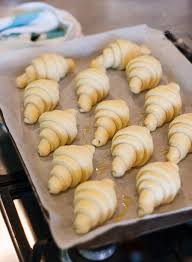
Croissant Dough Rich Dough
For the frasage, knead all the ingredients except for the butters in a dough mixer for 2 min in first speed, then add the cold butter cut in small cubes and continue to knead 8 min in the second speed. Pastry temperature 24 ° C Pointing 30 min at laboratory temperature. Tighten the dough and pass it 45 minutes in the freezer and finally in the refrigerator at 4 ° C throughout the night. The next day, spread the dough in the rolling mill to give the size of 60 x 40 cm and the place on a cold plate for 10 minutes in the deep freezer. Roll out the butter at half the size of the dough, place it on the tempera and close. Give a wallet 3/4 length, lengthen slightly and place in the refrigerator. Spread again, then give a simple turn, lower to the size of the plate and place cold again. To lengthen the dough 3 mm on the rolling mill, on a width of 35 cm, well relax the dough and cut the croissants on a base of triangle of 7 cm. Roll up the croissants, let it grow for 2 hours at 24/25 ° C, brown at brush and bake at 170 ° C for about 20 min. Size of the crescent: triangle of 8 x 35 cm, thickness: 3 mm, weight: 70 g.

croissant classic
Making the croissant dough We usually do this part in the evening. Combine the dough ingredients and knead for 3 minutes, at low to medium speed, until the dough comes together and you’ve reached the stage of low to moderate gluten development. You do not want too much gluten development because you will struggle with the dough fighting back during laminating. Shape the dough like a disc, not a ball, before you refrigerate it, so it will be easier to roll it into a square shape the following day. Place the disc on a plate, cover with clingfilm and leave in the fridge overnight. Laminating the dough Cut the cold butter (directly from the fridge) lengthwise into 1,25 cm thick slabs. Arrange the pieces of butter on waxed paper to form a square of about 15 cm x 15 cm. Cover the butter with another layer of waxed paper and with a rolling pin pound butter until it’s about 19 cm x 19 cm. Trim / straighten the edges of the butter and put the trimmings on top of the square. Now pound lightly until you have a final square of 17 cm x 17 cm. Wrap in paper and refrigerate the butter slab until needed. ake the dough out of the fridge. With a rolling pin roll out the dough disc into a 26 cm x 26 cm square. Try to get the square as perfect as possible and with an even thickness. Get the slab of butter from the fridge. Place the dough square so one of the sides of the square is facing you and place the butter slab on it with a 45 degree angle to the dough so a point of the butter square is facing you. Fold a flap of dough over the butter, so the point of the dough reaches the center of the butter. Do the same with the three other flaps. The edges of the dough flaps should slightly overlap to fully enclose the butter. With the palm of your hand lightly press the edges to seal the seams. Now the dough with the sealed in butter needs to be rolled out. With a lightly floured rolling pin start rolling out, on a lightly flour dusted surface, the dough to a rectangle of 20 x 60 cm. Start rolling from the center of the dough towards the edges, and not from one side of the dough all the way to the other side. This technique helps you to keep the dough at an even thickness. You can also rotate your dough 180 degrees to keep it more even, because you tend to use more pressure when rolling away from you than towards yourself. You can use these techniques during all the rolling steps of this recipe. Aim at lengthening the dough instead of making it wider and try to keep all edges as straight as possible. Fold the dough letter style, cover with clingfilm and refrigerate for 30 minutes (fold one third of the dough on top of itself and then fold the other side over it). Repeat the rolling and folding two more times (ending up with 27 layers of butter in total), each time rolling until the dough is about 20 cm x 60 cm. After each fold you should turn the dough 90 degrees before rolling again. The open ‘end’ of the dough should be towards you every time when rolling out the dough.at around 3:40 minutes). After the second turn, again give it a 30 minute rest in the fridge. After the third turn you leave the dough in the fridge overnight until day 3, the actual croissant making day! Dividing the dough Take the dough from the fridge. Lightly flour your work surface. Now very gently roll the dough into a long and narrow strip of 20 cm x 110 cm. If the dough starts to resist too much or shrink back during this process you can fold it in thirds and give it a rest in the fridge for 10 to 20 minutes before continuing. Do not fight the dough, when the dough refuses to get any longer, rest it in the fridge! It is such a shame to ruin two days of work. When your dough has reached its intended shape, carefully lift it a few centimeters to allow it to naturally shrink back from both sides. This way it will not shrink when you cut it. Your strip of dough should be long enough to allow you to trim the ends to make them straight and still be left with a length of about 100 cm. Shaping the croissants For the next stage you will need a tape measure and a pizza wheel. Lay a tape measure along the top of the dough. With the wheel you mark the top of the dough at 12,5 cm intervals along the length (7 marks total). Now lay the tape measure along the bottom of the dough and make a mark at 6,25 cm. Then continue to make marks at 12,5 cm intervals from this point (8 marks total). So the bottom and the top marks do not align with each other and form the basis for your triangles. Now make diagonal cuts starting from the top corner cutting down to the first bottom mark. Make diagonal cuts along the entire length of the dough. Then change the angle and make cuts from the other top corner to the bottom mark to create triangles. Again repeat this along the length of the dough. This way you will end up with 15 triangles and a few end pieces of dough Using your pizza wheel, make 1.5 cm long notches in the center of the short side of each dough triangle. Now very gently elongate each triangle to about 25 cm. This is often done by hand, but we have found that elongating with a rolling pin, very carefully, almost without putting pressure on the dough triangle, works better for us. You can try both methods and see what you think gives the best result. After you cut a notch in the middle of the short end of the triangle, try and roll the two wings by moving your hands outwards from the center, creating the desired shape with a thinner, longer point. Also try and roll the dough very tightly at the beginning and put enough pressure on the dough to make the layers stick together Proofing and baking Arrange the shaped croissants on baking sheets, making sure to keep enough space between them so they will not touch when proofing and baking. Combine the egg with a teaspoon of water and whisk until smooth. Give the croissants their first thin coating of egg wash. Proof the croissants draft-free at an ideal temperature of 24ºC to 26.5ºC (above that temperature there is a big chance butter will leak out!). use stone oven as a croissant proofing cabinet by preheating it for a minute to 25ºC It retains this temperature for a long time because of the oven stones and isolation. The proofing should take about 2 hours. You should be able to tell if they are ready by carefully shaking the baking sheet and see if the croissants slightly wiggle. You should also be able to see the layers of dough when looking at your croissants from the side.
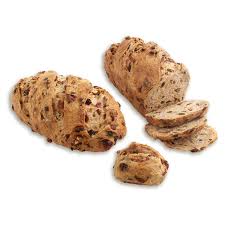
Cramberry Vegetable Bread
Mix first part water flour Mix the cramberry witgrated carrot, chive and onion Make the dough with second part of flour, sugar, milk powder, sel, firt part of dough, milk, water,and yeast Mix 3 minute at 1st speed and 5mn at 2nd speed Add the butter, all the fruit and vegetable and grated cheese, finish mixing to conbine all ingredients Rest the dough on plastic container 50mn for fermentation Cut 150 gr dough and shape and rest 20 mn Puch back the dough roll to shape final bread Rest 40mn for the second fermentation Add some water on top the bread and spray sone grated cheese before inserting to oven at 210 Add the steam and down the temperaturew to 190-200 for 30-35 mn Remove the breat and transfer to a rack to cool down
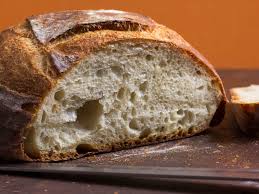
Country Style Bread
Mix all the flours and water and mix just until they are combined. Let stand for 30 minutes (autolysis). Add starter and salt. Mix on low speed 5-8 minutes to develop the dough. Fermentation Ferment at 24 ° C until almost double in bulk, about 8 hours. weigh 900 g. shape into round loaves. Proof to almost double in bulk, about 3-4 hours. Cooking 220 ° C with steam, 40-45 minutes

Corn Bread
Add the cornmeal to the mixing bowl and pour the dough water over it. Allow it to soak for about 15 minutes. This will begin softening the cornmeal, and mixing and handling quality will improve. Add the remaining ingredients to the mixing bowl, including the poolish. In a spiral mixer, mix on first speed for 3 minutes in order to incorporate the ingredients. The absorption of the cornmeal can vary considerably (particularly with medium or coarse cornmeal), so it is important to check the dough carefully while it is on first speed and make corrections as necessary. The dough should be of medium consistency once the ingredients are incorporated. Turn the mixer to second speed and mix for 3 to 3 1⁄2 minutes. Cornmeal tends to have a puncturing effect on gluten nevertheless, mix until there. is a moderate gluten development. Desired dough temperature: 24℃ Bulk fermentation: 11⁄2 hours. folding: Fold the dough after 45 minutes of bulk fermentation. dividing and shaping: Divide the dough into 350-600gr (or make rolls with smaller pieces). Preshape lightly into rounds and place on a lightly floured work surface, seams up. Cover the rounds with plastic. When the dough has relaxed sufficiently (10 to 20 minutes), shape it into tight round or oval loaves. Place the loaves into floured bannetons or onto lightly floured baker’s linen and cover with plastic. final fermentation: Approximately 1 to 11⁄4 hours at 24℃ Baking: Invert the risen loaves onto the loading conveyor or peel. Score the loaves as desired. Presteam the oven, load the bread, and steam again. Bake in a 230℃ oven. Open the oven vents after the loaves show color, in order to finish the bake in a drying oven. Loaves scaled 900gr will bake in approximately 40 minutes.
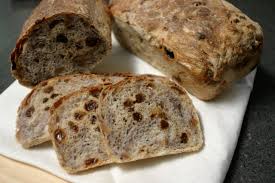
Ciabatta Walnut Raisin
Add all the ingredients to the bowl except the walnuts and raisins. In a spiral mixer, mix on first speed for 3 minutes in order to incorporate the ingredients. If necessary, correct the hydration by adding water or flour in small amounts. Finish mixing on second speed for 4 to 5 minutes, to moderate gluten development. Add the walnuts and raisins to the dough. Mix on first speed only until they are evenly incorporated. This dough can also be mxed using the bassinage technique Desired dough temperature: 24℃ bulk fermentation: 2 hours. folding: Fold the dough halfway through the bulk fermentation. dividing and shaping: Flour the work surface copiously. Invert the dough onto the work surface and gently pat out the larger air bubbles but remember that for the most part the fermentation gases and the associated interior air holes and pockets in the dough should remain intact. Lightly flour the top surface of the dough. Have ready a sufficient number of bread boards that are thoroughly (but not too thickly) covered with sifted bread flour. Cut a narrow strip, about 10cm wide, down the length of the dough. Then cut the strip into rectangles, each weighing 18 ounces. If the dough is too light, place the additional bits of dough needed to correct the weight onto the top of each dough piece. Place the dough pieces on the floured bread boards, with the scrap on top. If they are more square than rectangular, give a gentle stretch, but be careful not to tear the dough. When all the dough has been scaled, cover the boards with baker’s linen and then plastic (or place in a covered speed rack). final fermenTaTion: About 11⁄2 hours at 24℃ baking: With normal steam, 250℃ for 34 to 38 minutes for a loaf weighing 450gr. If the ciabatta is taking on too much color in the oven too soon due to the raisins, lower the oven temperature by 250℃
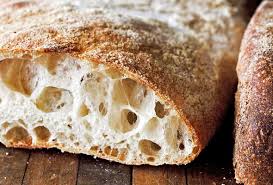
Ciabatta
Heat the water to about 37°C. Dissolve the yeast in warm water. Add the yeast mixture to the flour for the sponge. Add the oil. Mix to form a soft dough. Beat well for about 5 minutes or until the sponge begins to turn smooth. Cover and leave at room temperature until doubling in size, about 1 hour. Stir and add the ingredients for the dough. Beat for a few minutes to form a smooth paste, which will be very soft and sticky. Fermentation Cover and let ferment at room temperature until doubled in size, about 1 hour. Makeup and cooking Mold with light oil Handle the fermented dough as little as possible, ladle into portions weighing about 550 g. This is usually done by approximation to avoid having to handle the dough. Place the dough on a greased and floured baking sheet. Shape very lightly in rough ovals or rectangles on oiled pans. The dough will be very sticky; handle as little as possible. Sprinkle with additional flour. Proof at room temperature until the dough doubles in volume and the flour begins to crack slightly. Bake at 220 ° C for about 30 minutes, until golden brown. Cool on a grid.
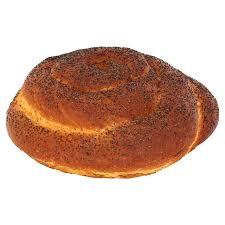
Cholla Bread
combine the yeast and water in the bowl of a stand mixer and stir with a fork until completely dissolved. Add the flour, sugar, eggs and olive oil. With the dough hook, mix on a low speed for 5 minutes to combine. Add the salt ” “speed for 5 minutes to combine. Add the salt and increase the speed to medium for a further 8 minutes. Remove the bowl from the mixer and cover it with a clean, damp tea towel. Leave the dough to rise, well away from any draughts, until it has doubled in size about 1½–2 hours. Turn the dough out onto a lightly floured surface. Use your hands to punch the air out of it and divide it into thirds. Take each piece in turn, and roll it back and forth to stretch it into a long thin roll about 50cm long. Now you’re ready to braid. Take your three logs and press them together at the end furthest away from you, with the central strand pointing directly towards you and the other two roughly at 90° from each other. Cross the right strand over the central one, laying it gently in the space between the central log and the left strand. What was on the right is now in the centre. Lift the left strand over the central log, placing it in the space between the central and right logs. Repeat until the braid is complete. Line a baking sheet with baking paper and carefully transfer the cholla onto it. Slip the whole thing into a large plastic bag. Inflate the bag so that the dough doesn’t come into contact with the plastic. Leave to prove again for 1½–2 hours, depending on the temperature of your kitchen. The loaf should be visibly larger, though not doubled in size. Meanwhile, preheat the oven to 200°C/gas mark 6. Lightly brush the top of the loaf with egg wash, making sure it goes into every fold and crevice. Sprinkle the seeds on top and place in the centre of the oven. Immediately reduce the heat to 180°C/gas mark 4 and bake for 40–45 minutes. Halfway through baking, rotate the baking sheet from front to back to ensure an even bake. The finished cholla should be a glossy, chestnut brown. Cool on the tray for 10–15 minutes before transferring to a wire rack to cool completely. VARIATIONS: Use brown sugar or honey in place of the sugar for a more mellow, caramel flavour.
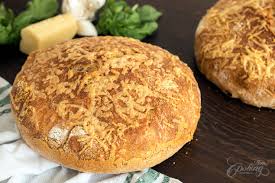
Cheese Bread
mixing: Add all the ingredients to the mixing bowl, with the exception of the cheese. In a spiral mixer, mix on first speed for 3 minutes, adjusting the hydration as necessary. The dough should be slightly on the stiff side at this point. Once the cheese is incorporated, it will have a looser feel. Mix on second speed for approximately 3 minutes more, to a moderate gluten development. Add the cheese and mix on first speed just until evenly incorporated. Avoid overmixing. Desired dough temperature: 24℃ bulk fermenttation: 2 1⁄2 hours. folding: Fold once after 1 1⁄4 hours or, if the dough seems to need more strength, fold twice at 50- minute intervals. dividing and shaping: Divide the dough into 1.5-pound pieces; shape round or oval. final fermentation: 1 to 11⁄2 hours at 24℃. Alternatively, retard the dough for up to 8 hours at 6℃, or up to 18 hours at 4-5℃ baking: With normal steam, 250℃ for 40 to 45 minutes. Lower the oven temperature to 220℃ after 15 minutes to avoid excess darkening due to the cheese.
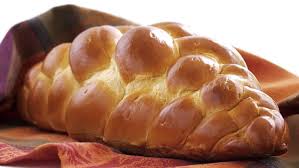
Challah Bread
straight dough method: Soften the yeast in a little of the water. Fresh yeast: Mix with about 2 times its weight in water, or more. Ideal water temperature: 38°C. Active dry yeast: Mix with about 4 times its weight in water. Ideal water temperature: 40°C. Combine the remaining ingredients, including the rest of the water, in the mixing bowl. Add the dissolved yeast, taking care not to let it come in contact with the salt. Mix to a smooth, developed dough.
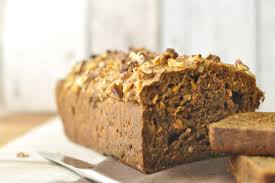
Carrot & Walnut Bread
mixing: Squeeze as much moisture as possible from the carrots and discard or drink. Add all the ingredients to the mixer except the carrots and wal-nuts. In a spiral mixer, mix on first speed for 3 minutes in order to incorporate the ingredients. If neces-sary, correct the hydration by adding water or flour in small amounts. Finish mixing on second speed for 3 minutes, to moderate gluten development. Add the carrots and walnuts to the dough. Mix on first speed only until they are evenly incorporated. Desired dough temperature: 24℃ bulk fermentation: 1.5 hours. folding: Fold the dough halfway through the bulk fermentation. dividing and shaping: Divide the dough into 450-900gr (or larger, as desired); shape round or oval, or make into pan loaves. final fermentation about 1 hour at 24℃ baking: With normal steam, 250℃ for 15 minutes, then lower the temperature to 220℃ to finish the bake. Loaves scaled at 900gr should bake for 35 to 38 minutes.
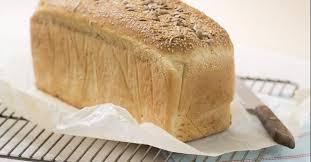
Buttermilk bread
Place all the ingredients except the pâte fermentée in a spiral mixer. Mix on first speed for 3 minutes in order to incorporate the ingredients. As the dough is coming together, add the pâte fermentée in chunks. Depending upon the absorption of the whole-wheat flour, you may need to correct the hydration by adding water or buttermilk. Finish mixing on second speed for 3 minutes. The dough should have good body and supple strength at this point. Mix 30 to 60 seconds longer if the dough seems to lack adequate strength. Desired dough temperature: 24℃ Bulk fermentation: 2 hours. folding: Fold the dough after 1 hour of bulk fermentation. dividing and shaping: Divide the dough into 450-900gr pieces (or larger, as desired). Preshape into rounds. When sufficiently relaxed, shape into round or oval loaves. Place them either into floured bannetons or between folds of floured baker’s linen, and cover with plastic. The bread can also be baked in loaf pans or shaped into rolls. final fermentation: About 1 hour at 24℃ Baking: Place the risen loaves on the loading conveyor or peel. Slash as desired. Presteam the oven, load the bread, and steam again. Bake in a 220℃ oven, opening the vents once the bread shows color, in order to finish the bake in a drying oven. Round loaves scaled at 450-900gr will bake in approximately 38 minutes. The buttermilk contributes color to the bread, so if the loaves are darkening too quickly, lower the oven temperature by 220℃
